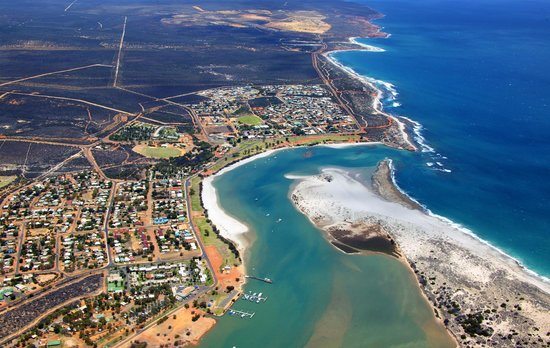

The West Australian town of Kalbarri is set to install a $10 million microgrid, which will integrate distributed solar, a 1.7MW wind farm, and 2MWh battery system, to increase the reliability of electricity supply to the holiday location.
Currently supplied in part by a 140km long line to regional center Geraldton, the project will improve the security of supply to the town.
The WA government, through state-owned grid operators Western Power and Horizon Power, is continuing to roll out micrograms, including storage, to build the resilience of supply to regional towns and remote communities – often located at the edge of grid. The latest of almost 20 such projects is the Kalbarri microgrid, which will be around 5 MW in capacity.
Currently, Kalbarri has a peak demand of 3.7 MW and is supplied by a combination of a local windfarm, rooftop and commercial solar systems, and a long “rural feeder line” connecting it to generation sources near to the city of Geraldton. Western Power is responsible for the supply to Kalbarri.
“This is a game-changer for regional communities who rely on power from a long feeder line, which is subject to environmental factors that can cause outages,” said WA Energy Minister Mike Nahan in announcing the project yesterday. “In the event of an outage on the main feeder line, the microgrid will ensure the Kalbarri community will still have power until the fault is corrected.”
Nahan said the project, which when completed could be Australia’s largest, will be used a test case for other regional and remote towns.
Expressions of interest to supply the system and components, such as the 2MWh battery array, will be sought in December with the project set to realized in December.
“It is expected contracts will be in place, and the project will be underway by 2017, with a commitment to have the microgrid up and running, as quickly as possible,” said Nahan.
RenewEconomy has previously reported that the “environmental factors” impacting supply via the long interconnection with Geraldton include wind-blown salt and dust. In March, a feasibility study into the microgrid was launched.
Kalbarri is a coastal town around 600km north of Perth. The town is a popular tourist location and is adjacent to the Kalbarri National Park and sits close to the Murchison River Mouth. It attracts around 200,000 tourists annually, and during holiday seasons the population swells to around 8,000.
In a blog post announcing the project, Western Power CEO Guy Chalkley said that the project would not only “supply reliability,” but it will have the ability to be expanded as the town grows. He noted that electricity demand during the tourist season almost doubles.
“There will soon be a certain irony now for holiday makers in Kalbarri in that while most come here to escape the frantic technology driven world, their power needs will be supplied by a 21st-century microgrid solution,” writes Chalkley.
The recent blackout in South Australia has increased attention on the security of electricity supply. Speaking at the COAG Energy Ministers’ meeting in Melbourne in the wake of the SA outage, Mike Nahan described the role battery storage can play in increasing energy security as “profound,” noting that the deployment of batteries in this way is often already “a lower cost alternative.”
Battery storage to the fore as electricity security takes center stage
“Also at Western Power on the fringe of grid, we have these lines that go out 150km with ten farms attached to them, and they have to be repaired. We are encouraging the farmers, and they are in almost all cases, to place stand alone power systems and we are getting a rapid rate of adoption.
“We have over 20 different battery systems being tested. It is experimental, but at Horizon it is also cost effective.”
Jonathan Gifford is an Australian clean technology journalist. You can follow him at @jonogifford
This article was originally published sister site RenewEconomy.


